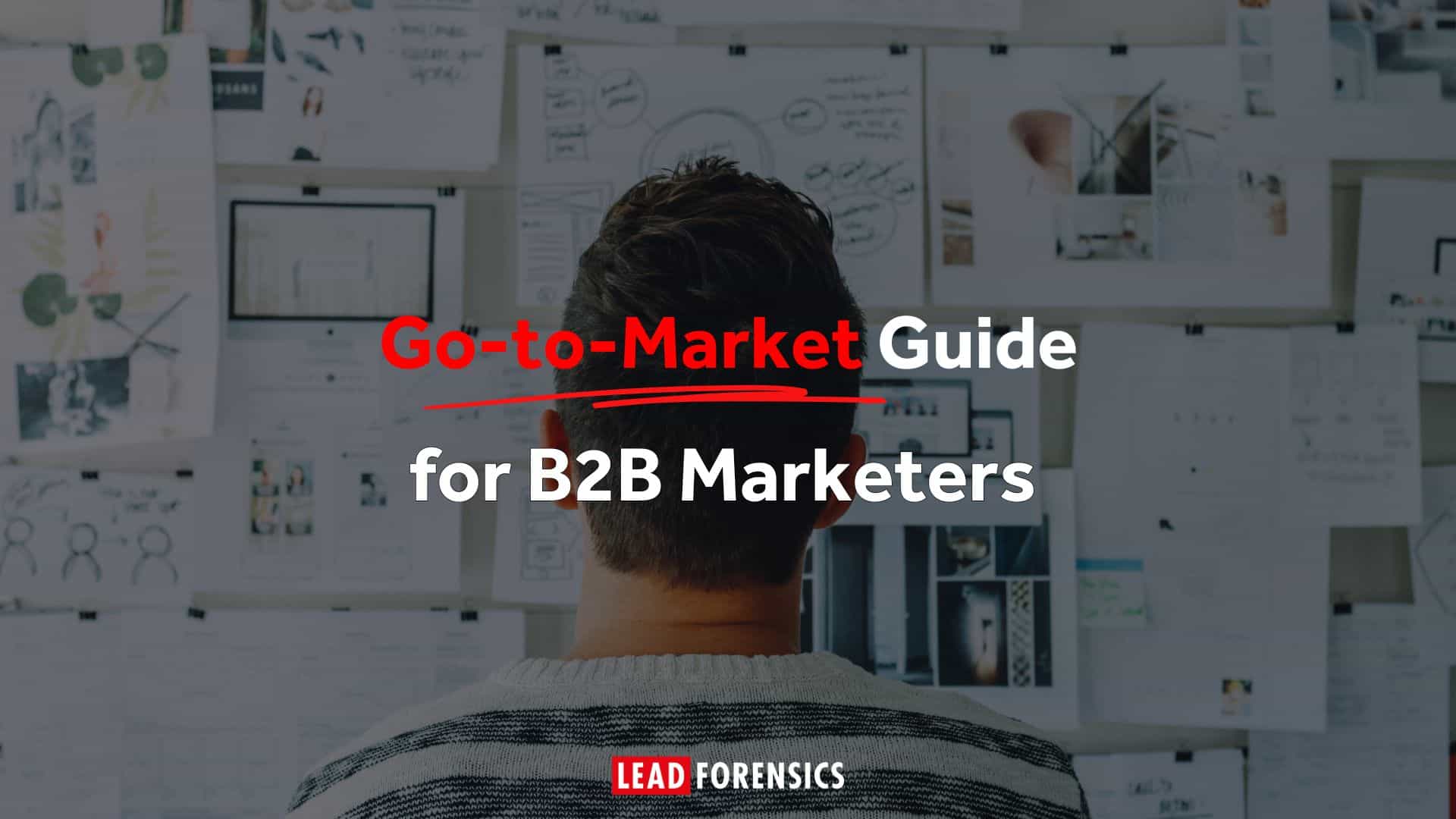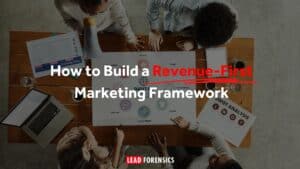Go-to-Market is a Revenue-Driving Strategy
More than just a checklist for launch, your go-to-market (GTM) strategy can help you hit measurable growth goals, drive attributable pipeline and reduce customer acquisition costs.
By adopting GTM, your marketing team will be better placed to respond swiftly to changing market conditions, competitive challenges and product evolution.
What is a Go-to-Market Strategy?
A GTM strategy outlines how your product or service is going to reach its target audience by bringing together things like market segmentation, buyer personas, and channel and pricing strategies.
It’s different from traditional marketing strategies, which often focus on building brand awareness at the top of the funnel.
Instead, go-to-market also thinks about product development, pricing, sales and sales enablement, distribution and customer support.
For this reason, the best GTM strategies are those that are adopted by all relevant teams, not just marketing. That means aligning sales, customer service and product teams with your plan.
When Do You Need a GTM Strategy?
As the name suggests, a go-to-market strategy is perfect for when you’re launching something new.
But that’s not the only time when GTM would be a good fit. You can also use this approach if you want to:
- Launch a new product or entering a new market. A GTM strategy will ensure your offer reaches the right audience at the right time.
- Announce product updates or expansions. A GTM plan will help existing customers understand the added value.
- Navigate mergers and acquisitions. A GTM approach will help you relaunch merged product lines and communicate value to new and existing customers..
- Reposition or strengthen your market share. GTM provides a framework for differentiating your brand and adapting to competitive changes..
Core Elements of a GTM Strategy
Your go-to-market strategy needs to include a handful of essential elements to make sure you’ve covered all bases and are prepared for success.
Research of Customers and Markets
Just like every other marketing campaign, you need to start with research. That means looking into your competitors, gathering customer insights, reviewing marketing demands and exploring industry trends.
When you understand customer pain points and unmet needs, you can find opportunities to solve them and stand out.
Make sure you segment your audience properly with firmographic and demographic detail and write detailed buyer personas to help tailor your messaging.
Defined Value Proposition and Messaging
Your GTM strategy also needs a unique value proposition that speaks to your ideal customer’s problems, and a clever way to communicate this.
Your prospective customers need to understand what makes this new product or service unique and how it solves their problems. When crafting your messaging, make sure it’s clear, concise and consistent across channels.
Measurable Goals and Metrics
A good GTM plan also needs to set measurable, objective and trackable metrics.
You should define goals such as revenue targets, win rates, market share growth, sales cycle length or customer retention, and consider how you’ll monitor performance and adjust your tactics accordingly.
An Appropriate GTM Model
There are many ways to go about GTM, depending on what you’re trying to achieve.
For example, a product-led approach works well for SaaS offerings with self-service capabilities and freemium models. Inbound strategies, fueled by content and SEO, are effective in research-heavy buyer journeys. And ABM is best suited for high-value enterprise sales cycles requiring personalized outreach, while channel-led approaches are effective in scaling through indirect partnerships across complex geographies or verticals.
Whichever you choose, make sure it’s in keeping with your goals.
Aligned Sales, Marketing and Enablement Teams
For GTM to work well, all teams need to be on the same page. That means that while marketing handles audience targeting and content, enablement equips sales reps with the right collateral, and sales has the conversations with prospects.
You can build alignment with regular cross functional meetings and shared data, which helps ensure everyone works toward the same goals.
The Best Channels and Promotional Tactics
Your promotion strategy should meet customers where they are. Often, that means combining content marketing, advertising, events, webinars and partnerships to reach your audience.
The Right Price and Package
Your GTM strategy also needs to make sure the price and package is competitive. You can test different pricing models, such as subscription, freemium and tired pricing—but it always helps to look at what your competitors charge, too.
Think about customer perception, your costs, and the best way to win new customers.
Continuous Feedback Loops
Another essential element of go-to-market plans is the ability to be dynamic and respond to feedback. If you’re flexible and adaptable, and you’re closely monitoring performance, you’ll be able to pivot appropriately if needed.
GTM Pitfalls to Avoid
Some of the common challenges that can see GTM strategies under-perform include:
- Operating in silos. A lack of collaboration between marketing, sales and customer success undermines alignment and means you won’t achieve as much as you could if everyone worked together.
- Being static or inflexible. The market evolves; your GTM strategy should adapt. Review metrics, keep track of competitor actions and consider customer feedback.
- Unrealistic expectations. Make sure you set achievable goals to avoid expecting overnight success or ignoring resource constraints.
- Dismissing competitors or customer needs. A strong GTM plan is built on thorough research and competitive analysis, not instinct.
Examples of B2B GTM in Action
One of the best ways to think about how a go-to-market strategy can help is to see how others do it. These examples come from well-known B2B brands that have successfully launched new features or reached new markets.
Slack’s Product‑Led Freemium Model
When Slack entered the crowded team‑collaboration market, it targeted tech‑savvy teams in SMBs with a value proposition that promised to replace disjointed communication with a centralised platform. They offered a generous free tier and made the product exceptionally easy to adopt. Word‑of‑mouth and integrations acted as primary growth engines and by 2019, Slack had over eight million daily active users and three million paid users. It was acquired by Salesforce for US$27.7 billion.
HubSpot’s Inbound Marketing Model
HubSpot launched in 2006 into a saturated market. To stand out, it pioneered the inbound marketing GTM strategy: publishing educational blogs, eBooks and webinars and providing free tools. Throughout the content, they placed calls to action that encouraged readers to try HubSpot’s free CRM. This approach built trust and attracted small and mid-sized businesses, helping HubSpot reach US$2.17 billion of total revenue in 2023 and grow to more than 205,000 customers worldwide
Intel’s Channel Partner GTM Strategy
Intel sells billions of chips through partners rather than directly to end customers. Its channel partner GTM approach involves working with OEMs and resellers like Dell, HP and Lenovo to provide training, tiered partner programs and joint marketing. This strategy allows Intel to maintain dominant market share and sell into every industry and geography to extend its reach and grow sustainably.
Tips to Implement Go-to-Market Strategies in B2B
If you’re ready to explore GTM, these tips should help:
- Audit your current approach and see where you might have gaps in market research, messaging, channel mix and team alignment.
- Build cross-functional alignment. Try to meet regularly with sales, marketing and enablement teams to develop cohesion and make sure data is shared with everyone.
- Iterate and optimize. Test messaging, pricing and channels and then commit to what works. Make sure you remain agile so you can adapt as the channels – and your prospects – adapt.
- Register for our webinar to learn how to build your own GTM engine
- Get help from the right tech stack. Visitor identification software like Lead Forensics can tell you which businesses are exploring your website so you can turn anonymous traffic into qualified pipeline and share data with sales and marketing teams. Book a demo to try for free.









